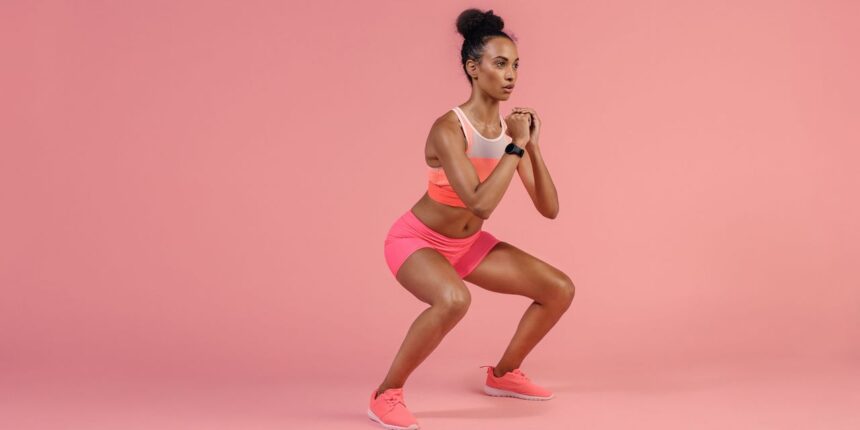Whether you’re in pre-brunch Pilates or your lunchtime HIIT class, you’ve probably been tasked with a certain directive that makes the four-letter words fly (in your head only, of course): Squat! Then…squat pulse!
While you’re dutifully performing those small but spicy movements, you can’t help but wonder—do squat pulses actually do anything!? We’re all for adding a challenging element to uplevel your workout, but it’s key that it actually has a purpose (and just isn’t hard for the sake of being hard). So: Do squat pulses fit the bill? We reached out to the pros to get the lowdown.
What exactly are squat pulses anyway?
A squat pulse is similar to the traditional lower-body compound movement we all know and love, but with a couple tweaks: The range of motion is much smaller and you don’t fully stand up between reps. This move involves both the eccentric (lowering) and concentric (raising) movements of a squat, done in quick succession, but because you won’t come back to start until the very end, your muscles don’t really get a “break”—which is why it can feel so freaking hard to do it even with just your bodyweight.
To perform a squat pulse, start with your feet hip-width apart. Push your hips back and bend your knees to lower down, keeping your chest up and core engaged. Once you’re at the bottom of the squat, rise about half way back up, then drop back down to the bottom position. Quickly repeat this pulsing movement, Brittany Watts, NASM-CPT, head coach at Tone House, tells SELF. You’ll likely do this multiple, multiple, times—in her classes, for 30 seconds straight, after a 30 second hold—and if you do it correctly, your lower body muscles, including your quads, glutes, and hamstrings should be feeling it. (Additionally, your core and calves help stabilize you throughout the movement, so you may feel the burn here as well, Meredith Witte, MS, CSCS, founder and owner of The Playground Fitness, tells SELF.)
You’ll likely encounter squat pulses most frequently in your HIIT, barre, or strength training-based classes, like boot camps. But if you’re not a group fitness fan, no worries, because you can add a pulse to your solo workouts, too. Sydni Arnett, NASM-CPT, a principal instructor at Barry’s Philadelphia, uses the move as a “burnout” at the end of her set when she wants “a little something extra juicy,” as she tells SELF. “I’d add a pulse at the end of a set of 10, for example.”
What are the benefits of squat pulses?
Squat pulses can help build muscular endurance and strength—and can help you gain muscle overall. They do this through a strength training tenet called time under tension (TUT), which simply refers to how long you’re working a muscle during each rep. Because of the added small movements of a squat pulse, your time under tension is going to be higher, since your muscles are firing for a longer time before relaxing than they would if you were doing reps of a regular squat. Plus, since you normally do squat pulses with just your bodyweight or a light weight, this allows you to do more of ‘em, which follows the formula for building muscular endurance.
Read the full article here



